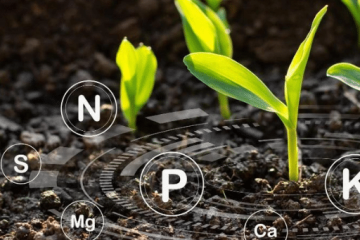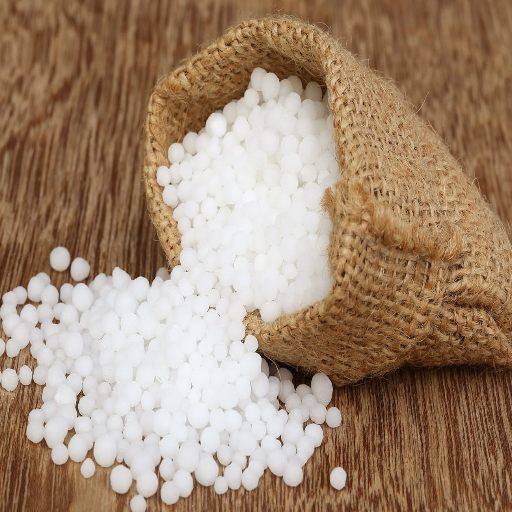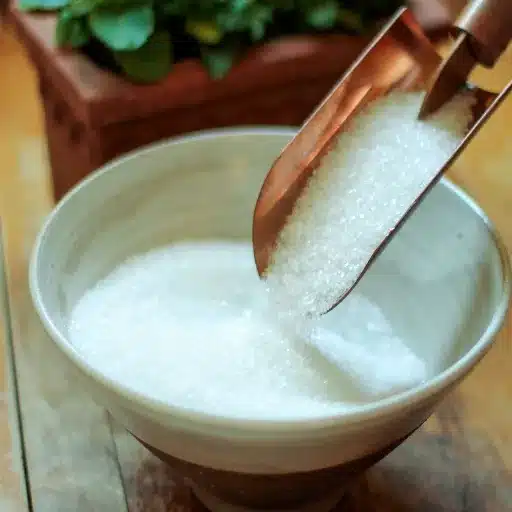In the pursuit of higher crop yields and sustainable food production, few agricultural innovations have been as impactful as urea fertilizer. Recognized as one of the most efficient and widely used nitrogen fertilizers globally, urea plays a pivotal role in meeting the nutritional demands of crops, ensuring robust growth and optimal productivity. This article explores the science behind urea, its significance in modern agricultural practices, and how its correct application can transform farming operations. Whether you’re a farmer, an agronomist, or someone curious about agricultural advancements, this comprehensive guide will deepen your understanding of why urea fertilizer is indispensable in today’s farming landscape.
Understanding Urea Fertilizer
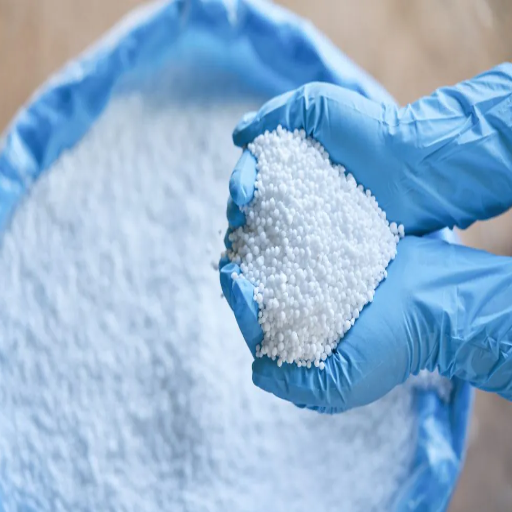
What is Urea Fertilizer?
Urea fertilizer is a nitrogen-based fertilizer that is widely used. It contains 46% nitrogen and is therefore one of the largest concentrated nitrogen sources available in solid form. Synthetic urea is manufactured using the chemical process called the urea cycle, wherein ammonia and carbon dioxide are utilized as raw materials. It is cheap and can be applied easily to almost any kind of crop or soil.
This conversion of fertilizer to usable nitrogen begins with urease, an enzyme naturally found in soils, plants, and microflora. By breaking down urea into ammonia and carbon dioxide, urease makes nitrogen available for uptake and growth of plants, while the nitrogen is vital for chlorophyll and protein synthesis, which in turn are required for healthy crops with good yields.
Being high in nitrogen, urea fertilizer is mainly used by crops such as wheat, maize, and rice in their vegetative stages. But this effectiveness is subject to its application methods, with the right timing and proper incorporation in the soil to reduce nitrogen losses through volatilization. When applied correctly, urea fertilizer helps in enhancing the productivity of crops and sustaining the agricultural system.
Chemical Composition: The 46-0-0 Ratio
The N-P-K ratio is that of urea fertilizers. In number format, these correspond to the percentage concentration of nitrogen (N), phosphorus (P), and potassium (K) in a fertilizer product: N-P-K values. For urea, the numbers mean: 46% nitrogen by weight, with no phosphorus or potassium. Such a high nitrogen content makes urea one of the most concentrated and efficient nitrogen sources in the agricultural industry, helping in good vegetative growth and development.
Nitrogen, being the first element in the ratio 46-0-0, is an essential macronutrient for plants. Nitrogen becomes important in the production of chlorophyll, which is needed for photosynthesis. Nitrogen is also crucial for amino acids, which form the primary elements of proteins that make up the structure of plants and provide them with necessary enzymes and metabolic functions. The number zero for phosphorus and potassium in this ratio tells that urea is a pure nitrogen fertilizer and that sources of these nutrients should be considered whenever the soil or crop requires them.
These critical attributes should be taken into account during the 46-0-0 urea fertilizer application for it to be done successfully. Urea fertilizer dissolves quickly in water,r and so does fast absorption by plants. Being vulnerable, however, to nitrogen-gas loss due to volatilization means that in ideal conditions such as warmth, alkalinity, or moisture, the fertilizer should be either incorporated into the soil or at least allowed enough time to be absorbed. If proper practices regarding application timing and placement are observed, nitrogen losses can be minimized and leveraged for improved farm productivity.
Forms of Urea: Granules vs. Prills
Granular-type urea, prilled urea, feed-grade urea, technical-grade urea, and DEF-grade urea are some of the forms, differing in size, purity, and application.
|
Aspect |
Prilled Urea |
|
|---|---|---|
|
Diameter |
1-4 mm |
1-2 mm |
|
Texture |
Irregular |
Smooth |
|
Nitrogen (%) |
46% |
46% |
|
Solubility |
Gradual |
Rapid |
|
Usage |
Long-term crops |
Quick boost |
|
Dust Level |
Low |
Moderate |
|
Price |
Higher |
Lower |
Benefits of Urea Fertilizer
Supporting Plant Growth
Due to its high nitrogen content, urea fertilizer is indispensable for optimum plant growth. Nitrogen is a primary macronutrient that facilitates chlorophyll synthesis; an increase or decrease in chlorophyll content affects the plant’s ability to convert sunlight efficiently. Urea also stimulates vegetative growth; an enhanced leaf area index would, in turn, help capture more light and increase total crop yield.
According to scientific studies, urea application can immensely increase crop yields if applied properly, with soil texture and time of application being crucial variables. Literature states that split applications of urea-N during different growth stages could reduce nitrogen loss due to volatilization and leaching and would secure an almost constant supply of nitrogen for plant use. Data also suggest that when urea is incorporated into the soil, or used along with urease inhibitors, ammonia losses can be reduced by as much as 50%, thereby enhancing nitrogen-use efficiency.
Form urea to be in various forms depending on crop and farming systems-so granular, prilled, or liquid. This flexibility enables farmers to apply nitrogen in ways best suited to their particular environmental and agronomic conditions, thereby maximizing both growth potential and environmental sustainability.
Increasing Crop Yields
Nitrogen management practices have evolved with an emphasis on enhancing crop productivity while safeguarding the environment. Site-specific application methods such as variable-rate technology allow farmers to apply nitrogen in the most suitable quantities, and thus reduce wastage while giving crops precisely what they need for nutrients. Enhanced nitrogen-use efficiency in the range of 40% with yield improvements in different crops has been reported due to site-specific management techniques.
Furthermore, cover crops have become increasingly considered as an important component of rotations to improve soil fertility and organic matter. Cover crops such as legumes fix atmospheric nitrogen into the soil and check nutrient leaching to provide nitrogen at a constant rate to cash crops. Recent agronomic data also accentuate the glory coming from using cover crops allied with good nitrogen management in the fields, offering incriminations of at least a 10-20% increase in yields in corn and other row crops.
The use of these systems further includes decision-support tools that offer real-time information on crop health and nutrient status derived from remote sensing and AI analysis. By considering weather conditions, soil parameters, and change of the phenological stage, these decision-support models indicate the demand for nutrients, thus helping a farmer with decision-making. Deployment of such systems in different farms has demonstrated that the overall nitrogen use efficiency can be improved while vastly increasing the crop yields.
Cost-Effectiveness of Urea Fertilizer
Urea fertilizer is broadly considered the cheapest alternative for nitrogen in modern agriculture. With around 46% of nitrogen content, it efficiently provides nutrients for the application based on weight, hence making the cost cheaper as compared to other fertilizers with nitrogen content. Moreover, the fertilizer has wide usage depending upon the type of crop and soil, thereby making it economically feasible for diversified farms.
When urea fertilizers are used in precision agriculture approaches, including soil testing and variable rate application after application, the efficiency regarding urea fertilizer utilization is increased. It cuts down waste, input costs, and potential nitrogen losses through leaching, volatilization, or runoff. According to agronomic research, the use of urea fertilizers in conjunction with advanced nutrient management technologies can improve NUE by 20% and thus improve the profitability of the farmer.
Cost-related advantages of urea stem from its simple transportation and availability worldwide. Because of recent improvements in the manufacturing processes, the energy intensity of the production of urea has diminished, and so has the ability of raw materials price changes to affect the market price of urea. Moreover, research being conducted to enhance the formulation of urea with stabilizers and inhibitors will help cut losses further, resulting in more economic benefits at the farmer’s field.
Application of Urea Fertilizer
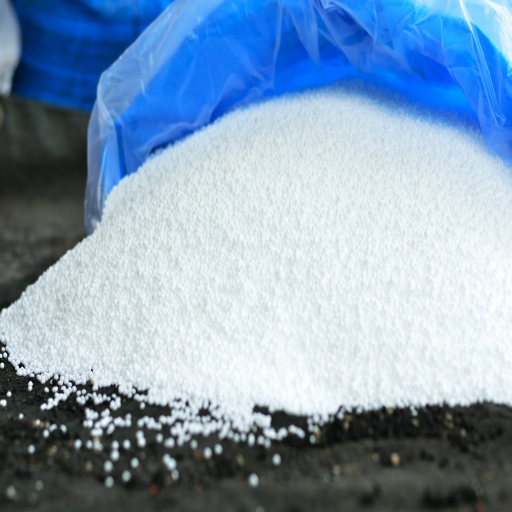
Best Practices for Application
- Proper Timing of Application: To be used most efficiently, urea must be applied at the right time. Urea is usually spread close to the crop’s peak period for nutrient uptake, mostly during early growth stages. The recommended time, in the case of cereals like wheat or rice, is mostly at the tillering and panicle initiation stages to meet nitrogen demand more effectively.
- Application Method: It is preferred that urea be worked into the soil instead of left on the soil surface, averting nitrogen loss by volatilization. Studies verify that working urea into the top 2-3 inches of soil reduces roughly 50% of ammonia volatilization losses, thereby increasing nitrogen availability to crops.
- Using Urease and Nitrification Inhibitors: To curb nitrogen loss via volatilization and leaching, it is advised that urea be used in stabilized forms with urease or nitrification inhibitors. Evidence indicates nitrogen loss reduction by about 20-30% when inhibitors are applied, translating to improved nitrogen use efficiency and sustainability of the environment.
- Incorporating Water Management: Irrigation management guides urea application. When urea is applied to dry soils, irrigation should follow immediately to incorporate the fertilizer into the soil. Data shows that such irrigation operation combined with urea application can increase nitrogen uptake efficiency by nearly 40%.
- Avoid Overapplication: Saving some additional money is possible with an overapplication, at least in theory, but environmental contamination through surface runoff or leaching is an imminent risk. Therefore, use soil testing tools and follow agronomic recommendations to establish the nitrogen needs of the crops. For example, soil nitrate testing would allow targeting nitrogen rate and hence a saving of 30% of resources as compared to blanket recommendations.
With these best practices in place, farmers can diversify their use of urea with higher yields, cost savings, and a lesser environmental impact.
Maximizing Efficiency and Minimizing Waste
The efficient use of farm inputs is a critical aspect of sustainable farming practices, especially in the case of nitrogen-based fertilizers such as urea. With advances in precision agriculture, farmers have been able to reduce the wastage and, therefore, optimize the allocation of scarce resources. Variable rate application (VRA) and remote sensing technologies, among others, permit site-specific nutrient management by studying soil variabilities and detecting precisely where nutrient deficiencies occur. Thus, fertilizers in need are not over-applied; nitrogen losses through volatilization, leaching, or denitrification are also remarkably reduced.
Data analytics in conjunction with weather forecasting enhances decision-making processes through real-time production information. For example, if rainfall is predicted within 24 hours, applying urea can help to infiltrate nitrogen through the downward percolation of rainwater, thus improving nitrogen uptake by crops and reducing runoff loss. Similarly, the use of inhibitors, like urease or nitrification inhibitors, effectively slows down nitrogen transformations and keeps nitrogen available for a longer time, thus increasing nitrogen use efficiency (NUE).
The implementation of these measures is further fruitfully backed by recent observations toward the provision that existence and application of precision farming techniques can reduce nitrogen waste to the tune of 40%. Earth-based data and the logical dexterity of agronomists facilitate farmers in catering to crop requirements while lessening environmental damages and operational costs, paving the way for a more sustainable agriculture.
Timing and Techniques for Application
Nitrogen use efficiency (NUE) and losses are maximized when nitrogen is timed and applied appropriately. In the following, five key evidence-based ways to optimize nitrogen application in agricultural systems are listed:
- Split Application: One split application consists of multiple doses that allow the nutrient supply to match crop uptake during the growing season. Hence, some leaching and volatilization chances are prevented. Some studies have pointed out that split application enhances NUE by about 15-30% as compared to a single pre-season application.
- Use of Controlled-Release Fertilizers: These fertilizers are designed to release nitrogen gradually over a certain period by the nutrient requirements of the crops. Field trials have even shown controlled-release fertilizers to reduce nitrogen loss by almost 20%, especially in spots where rainfall is greater.
- Application at Critical Growth Stages: If the application is scheduled at key growth phases, such as tillering or flowering in cereal crops, nitrogen will be available at the time of crucial demand. Yield enhancement of the order of 10-15% could be realized along with research evidence, as opposed to uniform application during non-critical stages.
- Precision Farming with Sensor Technology: Application of sensors for remote sensing, chlorophyll meters, or NDVI (Normalized Difference Vegetation Index) docked to UAVs supports the site-specific application of nitrogen. It has been established and documented that these technologies can lead to approximately a 20-40% reduction in nitrogen input requirements without compromising the yield levels.
- Adoption of No-Till or Minimum-Till Practices: In no-till and/or minimum-till systems, nitrogen fertilizers help keep moisture and organic matter in place. It’s found that this reduces nitrogen volatilization by up to 25% where wind speed or evapotranspiration rates are high.
By following these scientifically-supported methods, farmers can ensure proper matching of nitrogen release with crop demand, thus promoting efficient resource use and conserving the environment from severe damage.
Environmental Considerations
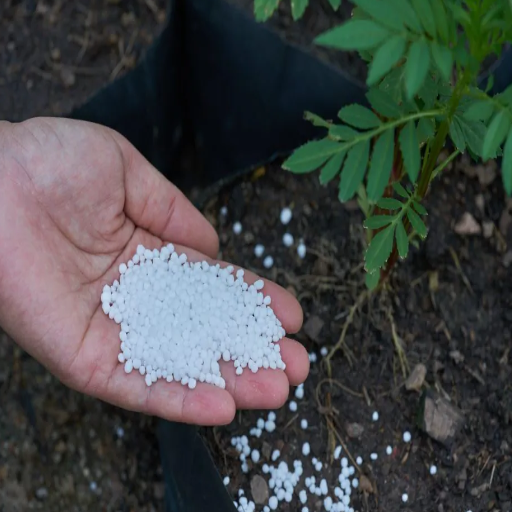
Impact of Urea on Soil Health
Applying urea as a nitrogen source in agricultural systems greatly determines soil health. Being a very good nitrogen fertilizer, the effects of urea, however, could be beneficial or detrimental under given management practices or environmental situations. Below are five detailed impacts of urea application on the soil:
- pH Alteration: When soil urease hydrolyzes urea, ammonium carbonate is formed, which can increase the soil pH level temporarily. With time, during nitrification, ammonium ions get converted to nitrate ions, which release H+ ions and thus cause acidification of the soil. Various studies indicate that when urea is applied continuously over multiple growing seasons, the soil pH can be reduced between 0.1 to 0.3 units, mainly in poorly buffered soils.
- Organic Matter Decomposition: Urea may increase the rate of organic matter decomposition in the soil by supplying nitrogen to microbes in a readily available form. Whilst this mode of action increases the microbial activity, a contrastingly fast decomposition of organic matter may result in depletion of soil organic carbon, unless organic matter inputs such as crop residues are maintained.
- Nitrogen Loss Through Volatilization: If not applied properly, that is, when it is surface-spread without incorporation under dry conditions, urea causes substantial nitrogen loss through ammonia volatilization. Conditions have been found unfavorable for reducing nitrogen able to stain the plants from 15% to 40% in loss, which, of course, decreases the nitrogen necessary for plants and thereby disturbs the nitrogen balance in the soil.
- Salt Index and Soil Structure: At high application rates, urea can increase soil salinity, citing the key property of the salt index. At elevated salinity, the soil structure may be impaired through the dispersion of soil particles; i.e., it may lose porosity, may have poorer water infiltration, and may restrict root growth. From field data, it has been observed that the cumulative application of urea over 200 kg N/ha per season may enhance salinity risk, especially in arid regions.
- Microbial Communities and Activities: Using urea changes both the soil microbial community structure and their activities. In the short term, microbial biomass usually increases as nitrogen availability is enhanced, but these changes trigger a cascade in microbial community dynamics during prolonged use, where it favors nitrifying bacteria at the expense of other beneficial microbes, resulting in imbalances in nitrogen cycling processes and soil ecosystem functions over time.
These impacts should be addressed through management methods such as split applications, incorporation of urea into the soil, and the use of urease inhibitors in reducing volatilization loss and further soil degradation.
Greenhouse Gas Emissions and Mitigation Strategies
An important source of greenhouse gases (GHGs) from the agricultural sector is N₂O and CO₂ emissions. Nitrous oxide is largely emitted from soil management practices involving nitrogenous fertilizers, whereas CO₂ emissions arise from deforestation or energy-intensive agricultural practices. Other emissions—mainly methane (CH₄), a by-product of anaerobic decomposition in rice paddies, and enteric fermentation from animals—are significantly critical to agricultural emissions.
The mitigation goal calls for efforts to reduce sources of emissions and enable carbon absorption within agricultural systems. Mitigation options include precision agriculture to avoid excessive fertilizer application and reduce N₂O emissions. The use of cover crops and no-till farming helps increase soil organic carbon stocks, thereby sequestering carbon and offsetting CO₂ emissions. For lowering methane emissions, the use of feed additives such as essential oils or algae in the diets of livestock can suppress methane generation within the digestive system. Also, water management in rice paddies, through technologies such as alternate wetting and drying, can reduce CH₄ emissions considerably.
Further supportive intervention options complementing these mitigation measures could be biochar and nitrification inhibitors. Biochar is a carbon-rich material derived from biomass through pyrolysis, which operates to improve soil fertility while keeping carbon sequestered for the long term. Nitrification inhibitors inhibit ammonium transformation to nitrate, thus reducing nitrous oxide released. With proper implementation and incentive programs, these pathways of mitigation can be realized towards the sustainability of agriculture and further reduction of greenhouse gases.
Comparing Urea Fertilizer with Other Nitrogen Fertilizers
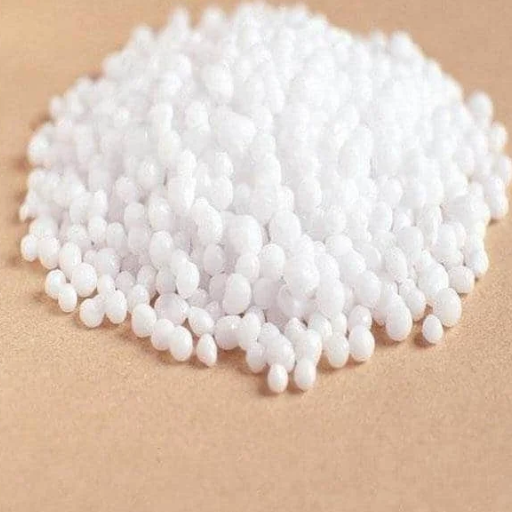
Advantages and Disadvantages of Urea
Advantages
- Nitrogen Content: Having roughly 46% nitrogen, urea remains one of the most concentrated nitrogen fertilizers available. High nitrogen discounts on quantity available for shipment or application, thereby lowering the costs and logistical issues.
- Cost-Effective: Urea is usually cheaper than other nitrogen-based fertilizers such as ammonium nitrate or calcium ammonium nitrate; that puts this fertilizer in the favor of growers worldwide.
- Application Versatility: The application methods of urea include broadcasting, incorporation into the soil, or just dissolving in water for foliar feeding. This flexibility makes this fertilizer suitable in all crop systems from seed to harvest.
- Non-Hygroscopic: Under normal storage conditions, urea dye does not attract moisture from the atmosphere, helping to maintain its integrity over a period.
- Easy to Manufacture and Widely Available: From a simple chemical reaction in the presence of ammonia and carbon dioxide, urea is synthesized; hence, it is produced and made accessible worldwide.
Disadvantages
- Volatilization Losses: When its surface application does not involve incorporation into the soil, urea faces a great danger of nitrogen loss through ammonia volatilization, thus affecting its capacity as a nitrogen source and increasing nitrogen pollution in the environment.
- Acidifying Effect on Soil: With the application of urea in an excessive and prolonged manner, the soils get acidified due to ammoniacal nitrogen from urea, which reduces the pH value of the soil and necessitates lime amendments to restore pH.
- Potential Environmental Hazard: When used improperly, overapplication of urea worsens eutrophication in water bodies caused by nitrogen runoff and also leads to elevated levels of nitrous oxide emissions, which is a strong greenhouse gas.
- Handling Problems: Though less hygroscopic, improper storage can result in urea clumping, especially if humidity is high. So it requires careful handling and storage procedures.
- Risk of Uneven Distribution: Applying urea by broadcasting without proper precision techniques or subsequent incorporation into the soil may result in uneven distribution of nutrients. This may interfere with crop growth and uniformity of yield.
Hence, through careful management, including the use of urease inhibitors and practices such as incorporation into soil immediately after application, we may make the best of the strengths of urea while lowering its weaknesses. These approaches, combined with ongoing innovations and better formulations, will keep urea as an important compound in global agricultural systems.
Performance Comparison with Ammonium Nitrate and Others
Differences between urea and ammonium nitrate are nitrogen content, release speed, cost, effect on the environment, and storage requirements.
|
Aspect |
Urea |
Ammonium Nitrate |
|---|---|---|
|
Nitrogen (%) |
46% |
33-34% |
|
Release |
Delayed |
Immediate |
|
Cost |
Lower |
Higher |
|
Efficiency |
Moderate |
High |
|
Storage |
Stable |
Regulated |
|
Safety |
Non-explosive |
Explosive |
|
Impact |
Volatilization |
Leaching |
Choosing the Right Fertilizer for Your Needs
Choosing between urea and ammonium nitrate as fertilizers requires some factors to be considered so that one perfectly fits the agricultural or gardening requirement. Initially, the nitrogen demand of the crops or plants is considered. Since urea has a higher nitrogen content (46%) than ammonium nitrate (33-34%), urea may be selected if it is crucial to deliver a maximum nitrogen amount at the least number of applications. Yet, I would consider its slow nitrogen release and the possibility of volatilization under certain environmental conditions.
Next, I consider its environmental and storage implications. Ammonium nitrate provides nitrogen instantly in cases where it has to act quickly. But leaching is another issue that needs to be looked at besides installing extra preventive measures regarding its handling and storage, since ammonium nitrate is classified as an explosive material. Conversely, urea is more stable and safer to store, but requires good application to avoid nitrogen losses through volatilization.
Cost and efficiency are weighed against operational priorities. Urea is often cheaper and allows one to fertilize a larger area with a limited budget. In contrast, more expensive ammonium nitrate will better satisfy high demands for efficiency and rapid delivery of nutrients. By looking at these issues carefully, I consolidate my choice of fertilizers toward the promotion of optimum plant growth and conservation measures.
References
Frequently Asked Questions (FAQ)
Q: What is urea fertilizer?
A: Urea fertilizer is a high-nitrogen fertilizer that contains urea as its main source of nitrogen. It is widely used in agriculture to enhance crop yield by providing essential nutrients. Urea can be applied to the soil in solid form, as prills or granules, or in liquid form as liquid urea.
Q: How is urea fertilizer applied to the soil?
A: Urea fertilizer can be applied directly to the soil in solid form or as a liquid fertilizer. When applying solid urea, it is important to consider the amount of nitrogen needed per acre, typically measured in pounds of nitrogen per acre. Liquid urea can be mixed with irrigation water to ensure even distribution and absorption by plants.
Q: What is the release of nitrogen from urea fertilizer?
A: The release of nitrogen from urea fertilizer occurs through a conversion process where urea undergoes hydrolysis, converting to ammonium. This process is facilitated by the enzyme urease, which helps break down urea in the soil, resulting in nitrogen that plants can absorb.
Q: How does urea fertilizer compare to ammonium sulfate?
A: Urea fertilizer is a high-analysis fertilizer that provides nitrogen in the form of urea, while ammonium sulfate contains nitrogen as ammonium. Urea is typically more cost-effective and has a higher concentration of nitrogen, while ammonium sulfate can be beneficial in alkaline soils due to its acidity.
Q: What is the recommended application rate for urea fertilizer?
A: The recommended application rate for urea fertilizer varies based on soil type, crop type, and the desired amount of nitrogen. Generally, a common guideline is to apply around 100 pounds of nitrogen per acre, which translates to a specific amount of urea based on its concentration.
Q: What are the potential downsides of using urea fertilizer?
A: While urea fertilizer is effective, it can volatilize, especially in alkaline soils or when not incorporated into the soil. This can lead to the loss of nitrogen as ammonia gas, reducing its effectiveness. Proper storage and handling are essential to minimize these risks.
Q: Can urea fertilizer be mixed with other fertilizers?
A: Yes, urea fertilizer can be effectively mixed with other fertilizers, such as a mix of urea and ammonium sulfate. This combination can provide a more balanced nutrient supply to crops and improve overall soil fertility.
Q: What is liquid urea, and how is it used?
A: Liquid urea is a form of urea fertilizer that is dissolved in water, making it easy to apply through irrigation systems. It provides a soluble source of nitrogen that is readily available for plant uptake, ensuring efficient nutrient delivery.
Q: How does soil pH affect the effectiveness of urea fertilizer?
A: Soil pH can significantly impact the effectiveness of urea fertilizer. In soils of high pH, urea may volatilize more quickly, leading to nitrogen loss. Therefore, understanding the soil’s pH is crucial when determining the best application methods and rates for urea fertilizer.


